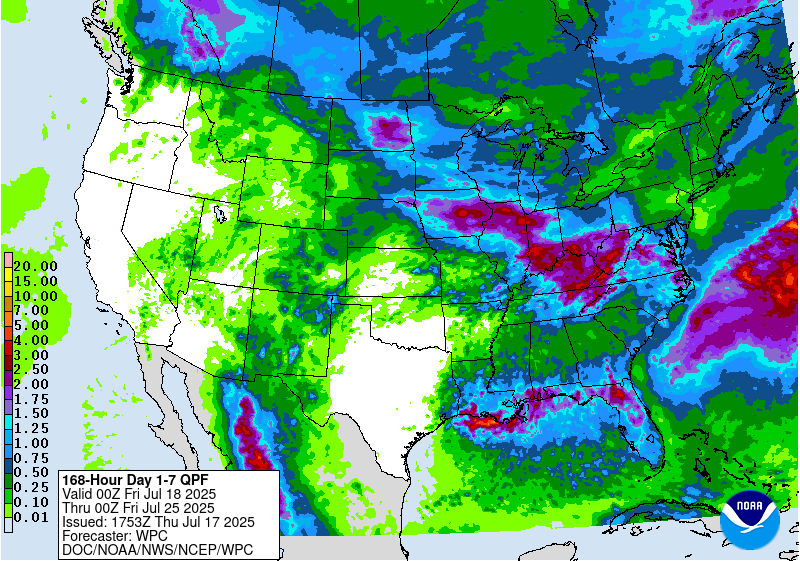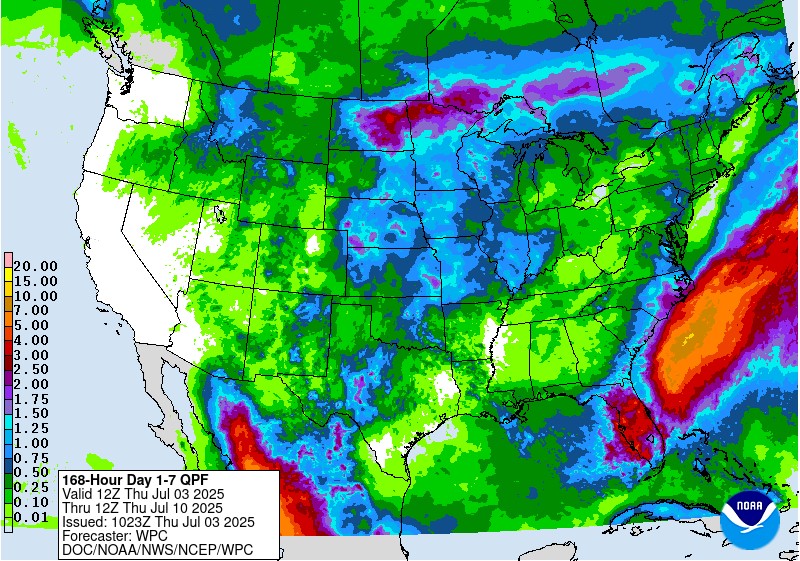
Precipitation forecasts for Indiana over the next 7 days (through late Thursday, July 24) are calling for close to 3 inches (Figure 1).

Precipitation forecasts for Indiana over the next 7 days (through late Thursday, July 24) are calling for close to 3 inches (Figure 1).
This half-day event will provide insight into the latest in grain and fiber hemp production, crop diversification, post-harvest handling, and product development.

Red crown rot of soybean continues to be a concern this season in Indiana. We have our first reports for 2025 in fields that have had a previous history.
As mentioned in this space last week, below is a survey link to gain some insight into mid-season insect pests.

One heat wave down, more to come.

We live in a life of averages. GasBuddy, a crowd-sourced app, reported the highest national average price of gas was $3.70 in 2024.

It is important to continue to scout for diseases in both corn and soybeans to make informed management decisions.

This is the time of year when much of the insect pest management in crops has been completed… early season pests have come and gone and weather conditions are ideal for crops to grow and recover from most minor damage.

One heat wave down, more to come. It is summer, though, so aside from expecting plenty of hot days, the things to be more concerned about is reference (or potential) evapotranspiration (ET) significantly exceeding precipitation that would ultimately cause drought-related impacts. The National Weather Service provides a 7-day forecasted reference ET product as well as a 7-day forecast for total precipitation amounts. From these resources, it looks like across Indiana, approximately 1.5” of water is expected to be lost over the next 7 days and anywhere from 0.10” to up to 1.5” of precipitation will be received (Figure 1). This implies a water deficit for most areas – which is not unusual throughout Indiana summers. The concern comes when that deficit becomes much greater than normal. Concerning drought, the U.S. Drought Monitor continues to place northwestern Indiana in the Abnormally Dry (D0) category with two isolated areas within that zone[Read More…]
REGISTER HERE Field Day Schedule • Wednesday, July 30, 2025 • Agronomy Center for Research and Education • 4750 US Highway 52 West, West Lafayette, IN 47906 • Sign in from 8:30 – 9:00 am EST in the Beck Center • Demonstrations from 9:00 am – 1:45 pm EST • Lunch from 11:45 am – 12:30 pm EST Field day topics • Grain and fiber production research • Crop diversification • Post-harvest handling and processing • Application of hemp in food science • Hemp for animal agriculture Please join us for the 2025 Hemp Field Day! This half-day event will provide insight into the latest in grain and fiber hemp production, crop diversification, post-harvest handling, and product development. Researchers, farmers, and industry professionals will share their projects and real-world experiences. Speakers will present the latest research, and attendees will get the chance to speak with current hemp growers and walk[Read More…]
© 2026 Purdue University | An equal access/equal opportunity university | Copyright Complaints | Maintained by Pest&Crop newsletter
If you have trouble accessing this page because of a disability, please contact Pest&Crop newsletter at luck@purdue.edu.